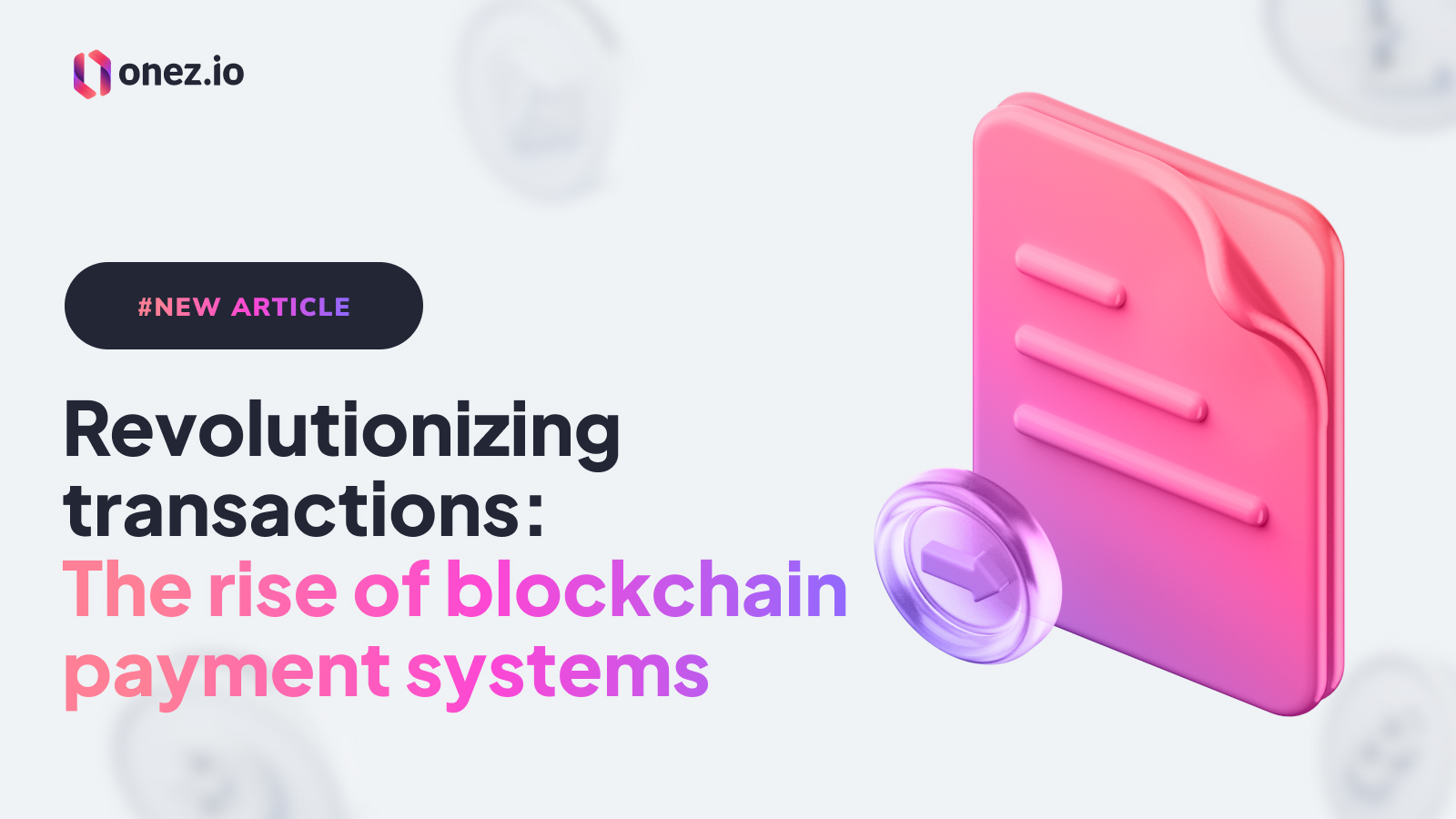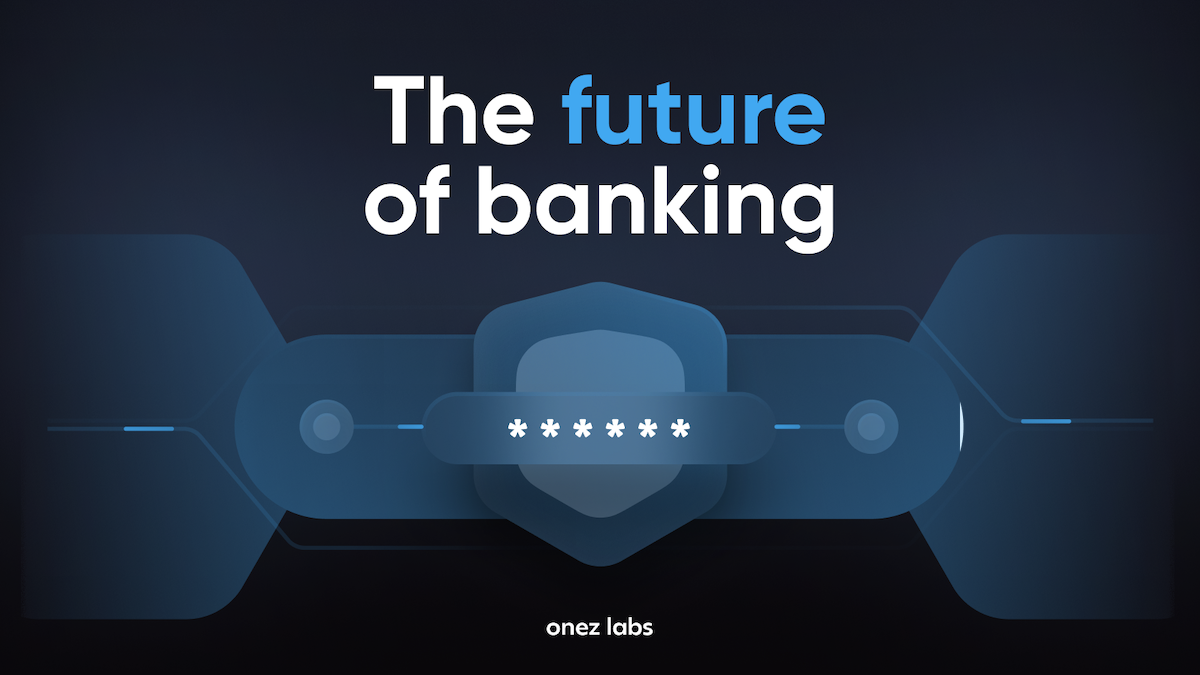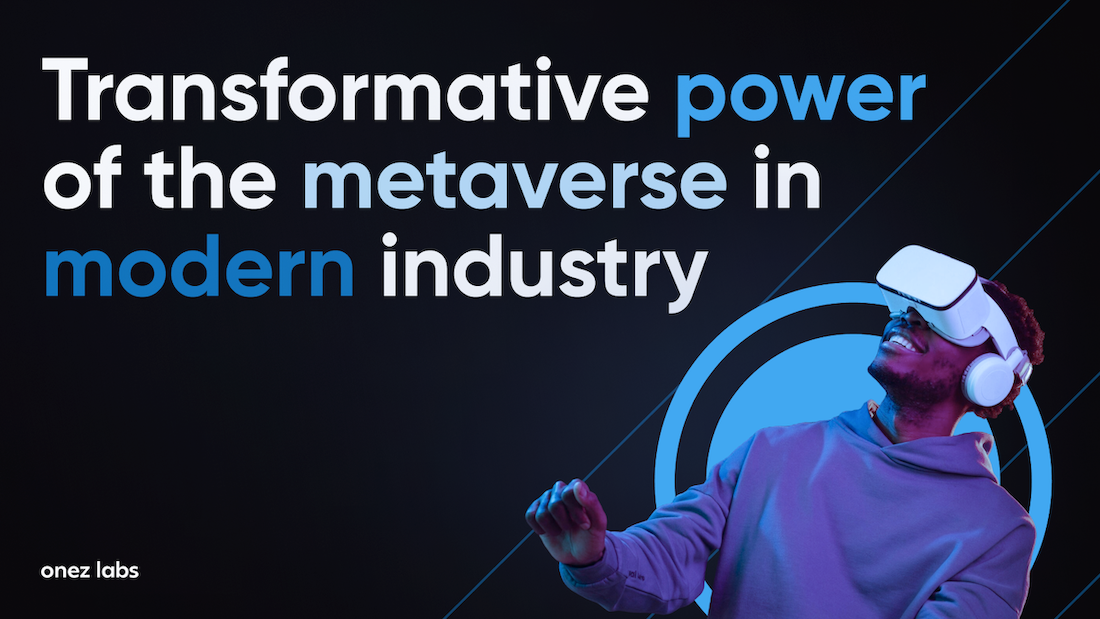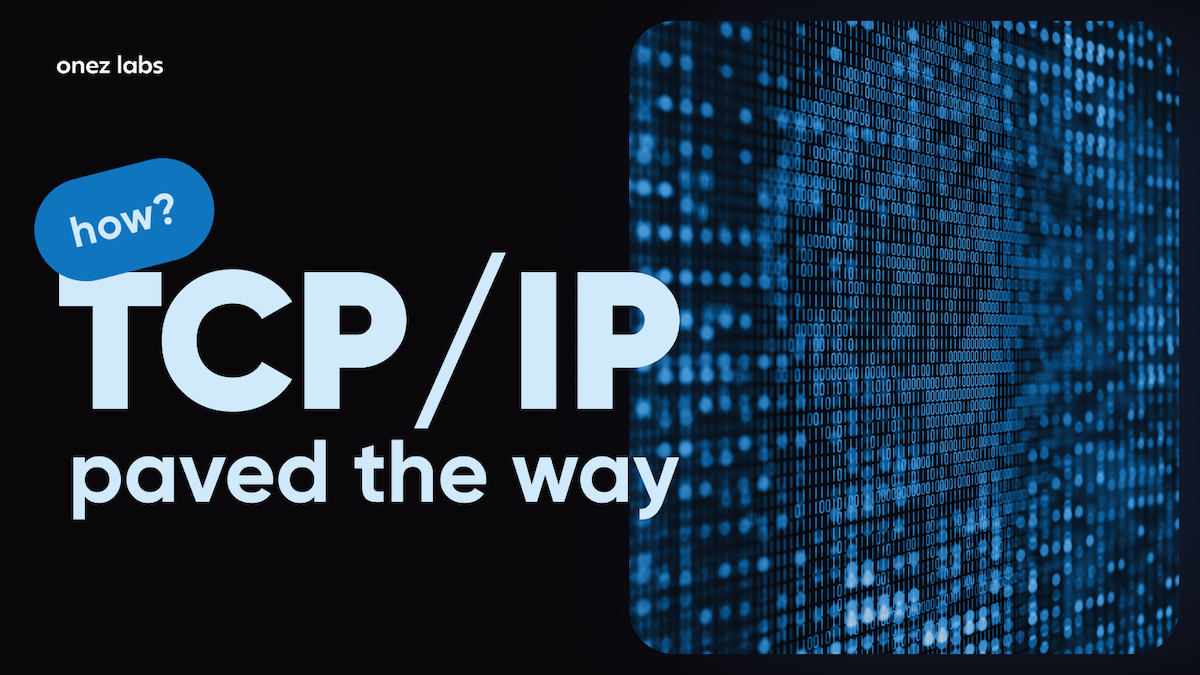Table of Contents
- The future of finance: Understanding Blockchain Payment Systems
- Cracking the code: Exploring the tech of Blockchain Payments
- Blockchain payment triumphs: Exploring success stories
- Difficulties with blockchain-based payment systems
- The future of blockchain payment system
- FAQ
Cryptographer David Chaum described a “blockchain-like” system in his dissertation a few years ago, imagining a safe way for organizations to handle data without questioning the agents’ transparency. Back then, it needed to make more sense.
Stuart Haber and W. Scott Stornetta published a paper detailing a cryptography system for digital timestamp security around the same time. Even as the system was still in its infancy, some individuals had already imagined a payment processing system built on blockchain technology. Even so, it would take years to become a reality and implement it.
Today, it is worth over 5 billion and is described by experts as one of the fastest-growing industries in the world, alongside artificial intelligence. The $5 billion global market value of blockchain technology, mainly used for cross-border payments and settlements, transaction tracking agreements (smart contracts), and commercial finance environments (loans and financing), was approximately thirty percent owned by the European banking sector by the end of 2021.
Financial players and institutional investors now recognize the potential of blockchain technology. Prominent entities within the digital payments and e-commerce domains have persistently declared novel advancements and prospects concerning blockchain technology and its applications, specifically about cryptocurrencies, among its most popular offshoots.
Let’s investigate some significant industry participants who are keen to see blockchain payments take off. It will introduce a new service in October 2020 that will let customers buy, store, and sell cryptocurrencies directly from their PayPal accounts. The second semester of 2021 saw the final implementation of this service.
In September 2021, Visa declared that it would construct a cross-chain payments hub to facilitate the exchange and transfer of digital assets between payment channels and blockchains via the Universal Payment Channels (UPC) protocol.
This article examines the idea of blockchain payments, their structure, the underlying technology, their benefits, case studies, and difficulties.
The future of finance: Understanding Blockchain Payment Systems
A blockchain payment system is a decentralized digital infrastructure that uses blockchain technology to enable secure and direct transactions without intermediaries. Consensus algorithms permit people to transact with one another directly and record transactions on a distributed ledger for verification.
Compared to conventional payment methods, blockchain payment systems provide increased security and transparency by guaranteeing the authenticity, integrity, and confidentiality of transactions through cryptographic techniques. Usually, digital tokens or cryptocurrencies, such as Ethereum or Bitcoin, are used in these blockchain examples for payments.
Moreover, an audit trail is provided by the immutability of blockchain records, which virtually eliminates the possibility of transaction histories being changed or falsified and lowers the risk of fraud. Blockchain invoicing and blockchain cross-border payments are facilitated seamlessly through the blockchain system, enhancing efficiency and reducing transaction costs.
Additionally, crypto payment apps and blockchain payment gateways offer user-friendly interfaces for individuals and businesses to engage in secure and convenient transactions within the crypto payment system.
The approximate value of the global blockchain market in 2022 was $11.14 billion. At a CAGR of 59.9%, it is projected to increase from $17.57 billion in 2023 to $469.49 billion by 2030. Among blockchain use cases, cross-border payments and settlements are considered the biggest. In 2021, it held 15.9% of the global blockchain market, according to the IDC Worldwide Blockchain Spending Guide.
According to Juniper Research, the total value of B2B cross-border payments immutably stored on the blockchain will surpass $4.4 trillion by 2024, making up 11% of all B2B cross-border payments. This represents an increase from $171 billion in 2019. The growing need for payment data transparency and traceability, as well as the ability to process payments quickly, securely, and affordably without the need for intermediaries, are the primary factors propelling the popularity of blockchain-based payment solutions.
Cracking the code: Exploring the tech of Blockchain Payments
Blockchain payment transactions are initiated by network participants or enforced automatically by smart contracts in response to predefined events. The peer-to-peer (P2P) network of nodes receives the requested transaction and uses the pre-established consensus protocol to validate it.
Blockchain data is saved in timestamped blocks connected chronologically after being verified and hashed using a hash function. To track payment-related activities and validate the identities of blockchain users, the blocks combine to create a distributed ledger that acts as a single source of truth. Every network user keeps a copy of the shared ledger, which is automatically updated whenever new information is added.
Through role-specific web and mobile applications (e.g., for individuals, businesses, and financial services providers), users engage with a blockchain to send, receive, and trace payments.The blockchain solution can be combined with case-specific systems like supply chain management software or e-commerce platforms, as well as with accounting software, financial data marketplaces, and cryptocurrency wallets.
Blockchain invoicing and cross-border payments are seamlessly integrated into the crypto payment system, facilitating efficient and secure cross-border transactions across borders. Additionally, crypto payment apps and blockchain payment gateways offer user-friendly interfaces for individuals and businesses to engage in safe and convenient transactions within the blockchain system.
Characteristics of the tech of Blockchain Payments
- Processing payments in real-time
With no need for third parties, the blockchain system enables almost instantaneous processing of domestic and international payments, including recurring payments. There are no cutoff times for the 24/7 processing of transactions. - Automated documentation
Every payment transaction is automatically verified, timestamped, and entered into the immutable distributed ledger along with any pertinent data from the linked systems (such as information on currency exchange rates and payment documents). - Traceability of payments
The distributed ledger allows blockchain users to track every payment transaction in real-time and view their complete history. - A complete audit trail for documents about payments
Blockchain captures and records all modifications made to payment-related documents (such as receipts, bills of lading, letters of credit, and invoices) and information about creating, editing, viewing, and sharing documents. - Support for a variety of currencies
Payment transactions in required cryptocurrencies, including custom cryptocurrencies, can be supported seamlessly by blockchain technology. - Payments using QR codes
With blockchain, money can be exchanged by scanning a QR code containing important information about the recipient’s cryptocurrency wallet address and chosen currency. - Automation enabled by smart contracts
When specific conditions are met, smart contracts act as rule-based instructions that automatically enforce pre-arranged payment transactions between the involved parties (e.g., payment to the supplier upon product delivery) - Electronic signatures for transactions
Each blockchain participant has a distinct digital signature to verify their ownership and E-Sign the submitted payment transactions. - Payment data validation based on consensus
Payrolls are automatically vetted and ranked for processing and archiving based on pre-established consensus rules, such as selective endorsement (private blockchains) or proof-of-stake (public blockchains). - Hashing
Blockchain automatically assigns every data block in the network a hash value, a unique cryptographic identifier. The data is tamper-evident because if the payment transaction data in one block changes, the hash values of all subsequent blocks will also change. - Safety
Multi-factor authentication, which includes fraud detection algorithms, payment data encryption, biometric authentication (such as fingerprint or face recognition), and more, supports the safety of payment data in blockchain technology. - Automated verification of KYC and AML
Blockchain allows for real-time customer authentication, immutable audit trails for all updates to customer information, and automated customer identity verification in compliance with KYC/AML regulations.
Core use cases
Local transfers
Quick and easy peer-to-peer payments include QR code-based payments for in-person transactions, retail, healthcare, public transit, entertainment, and other industries.
International payments
International payment transactions that are quick and affordable without using intermediaries like banks or governments. Complete visibility into all payment information and transactions for better financial operations control and transparency.
Finance for trade
The blockchain payment system provides traceability of financial obligations between trading partners and records impervious to tampering. Automated payment enforcement is implemented upon predefined events to minimize payment delays and guarantee the timely fulfillment of multi-party agreements.
Payments of taxes
The blockchain payment system ensures automated tax payments to avert penalties for late filing and stop tax fraud. To guarantee consistent and legal tax reporting across various jurisdictions, maintain unchangeable records of taxable amounts, supporting documentation, and tax payment transactions. Additionally, it makes tax audits easier for tax authorities.
Why does blockchain payment system edge traditional payment system?
Blockchain payment systems are upending the financial landscape in several ways and have many advantages over conventional payment methods.
- Enhanced protective measures and fraud avoidance
Strong security is provided by the blockchain system’s cryptographic structure, which makes it highly resistant to fraud and manipulation. The blockchain offers high trust and integrity because transactions recorded there are transparent and unchangeable. - Improved traceability and transparency
The blockchain produces blockchain examples, an open ecosystem, making every transaction visible to all users. Because of the ability to track transactions back to their source, transparency promotes accountability, trust, and effective auditing. - Lower transaction expenses
Intermediaries are frequently used in traditional payment systems, which add to the costs and delays. On the other hand, blockchain payment systems do away with intermediaries, enabling peer-to-peer transactions directly and cutting costs dramatically.
Blockchain invoicing and cross-border payments are seamlessly integrated into the crypto payment system, facilitating efficient and secure cross-border transactions across borders. Additionally, crypto payment apps and blockchain payment gateways offer user-friendly interfaces for individuals and businesses to engage in safe and convenient transactions within the crypto payment system. - Quicker settlements and enhanced effectiveness
Blockchain payment systems facilitate almost instantaneous transaction settlement by doing away with intermediaries and leveraging smart contracts. This automation lowers administrative burdens and boosts overall productivity by doing away with manual reconciliation procedures. - Worldwide reach and cross-border transactions
Blockchain-based payment systems operate globally, offering minimal friction when conducting cross-border transactions. Individuals and companies can quickly and affordably conduct international payments with lower fees and transactional friction.
Blockchain payment triumphs: Exploring success stories
In 2017, JP Morgan Chase & Co., in collaboration with Royal Bank of Canada and ANZ, launched Interbank Information Network (IIN), a blockchain-powered interbank payment platform. The platform enables real-time processing of interbank and blockchain cross-border payments, streamlines financial document management, and keeps an immutable record of all transactions.
Blockchain and smart-contract-based automation enabled JP Morgan Chase & Co. to reduce bank transfer processing time from 3 days to 1 hour and cross-border transaction fees from 5 to 30% to 2 to 3%, resulting in significant operational cost savings.
Furthermore, the bank gained improved accuracy and complete visibility of transaction-related financial documents. JP Morgan Chase & Co. launched its digital currency, JPM Coin, in 2019 to facilitate and speed up global payments between its business clients.
A FinTech startup raised $21 million in four years and was acquired by a significant DeFi market player. A Portuguese FinTech startup has created Utrust, a blockchain payment processing solution that allows businesses and individuals to send and receive cryptocurrency quickly. The solution accepts payments in over 30 cryptocurrencies and automatically converts the received amounts to the user-defined fiat currency.
It effortlessly fuses with major e-commerce platforms like Adobe Commerce (Magento) and WooCommerce, as well as crypto wallets like Binance and Coinbase. Between 2017 and 2021, the startup raised $21 million in funding. In 2021, more than 180 countries and 100 businesses used Utrust. Elrond Foundation, an EU-based DeFi company with $2.06 billion in TVL (2021) and the 10th largest DeFi ecosystem, purchased Utrust in 2022.
Difficulties with blockchain-based payment systems
Although blockchain payment systems have many advantages, several issues must be resolved before being widely used and scaled.
- Scalability problems
Scalability is becoming increasingly crucial as blockchain networks become more prominent and used. Due to their limitations in terms of transaction, traditional blockchains may experience delays and congestion. Scalability-enhancing strategies, including sharding, layer-two protocols, and optimized consensus algorithms, are being investigated. However, blockchain developers claim that advanced schemes are being developed, which should be out in the coming years. - Energy use and Its effects on the environment
Some blockchain networks use energy-intensive consensus techniques, which have adverse environmental effects. To address these issues, research and development activities are concentrated on creating consensus algorithms that are more energy-efficient and encouraging the use of renewable energy sources. - Legal and regulatory aspects
Due to blockchain technology’s infancy, legal and regulatory ambiguities exist. For blockchain payment systems to be widely adopted and accepted, clear and comprehensive regulatory frameworks covering data privacy, identity verification, and compliance must be established. - Challenges with user experience and adoption
For blockchain payment systems to be widely adopted, they must offer smooth experiences and user-friendly interfaces. It is imperative to streamline intricate procedures such as wallet interfaces, key management, and transaction execution to motivate people and companies to adopt blockchain-based payment solutions.
The future of blockchain payment system
At Onez, we’re at the forefront of harnessing blockchain technology to revolutionize payment systems. Our White Label Crypto Payment Gateway is a testament to our commitment to innovation and efficiency in the financial landscape. As the future of blockchain payment systems unfolds, our solutions are designed to meet the growing demand for affordable, fast, and secure payment methods, particularly in the realm of cross-border transactions.
Blockchain technology is reshaping how payments are processed, offering a seamless, secure, and cost-effective alternative to traditional financial systems. Recognizing the immense potential of blockchain, our crypto payment gateway simplifies cross-border transactions by leveraging the technology to eliminate intermediaries, thereby reducing costs and transaction times significantly. This approach not only makes international money transfers more efficient but also more accessible for businesses and individuals alike.
In anticipation of the increasing convergence between blockchain-based systems and traditional financial networks, Onez’s solutions are crafted to ensure seamless interoperability among various payment platforms. Our gateway facilitates easy transfers across different networks, promising smoother financial transactions and enhancing the user experience.
Furthermore, acknowledging blockchain’s capability to tokenize physical assets, Onez’s platform supports payments in over 50 digital assets, offering unprecedented financial flexibility and innovation opportunities. Our system allows for the automatic conversion of payments into the desired currency, paving the way for the use of digital tokens backed by tangible assets. This feature opens up new avenues for payments, making our solution a pivotal player in driving efficiency and innovation in the global economy.
With Onez, businesses can confidently step into the future of payments, equipped with a secure, customizable, and easy-to-use platform that grows with their needs. Our dedication to advancing blockchain technology ensures that our clients are always at the cutting edge of payment solutions, ready to meet the evolving demands of their customers worldwide.
Blockchain payment systems are distributed architectures that use blockchain technology to enable safe, direct, middleman-free transactions. These systems offer better security, increased transparency, lower transaction costs, and increased efficiency by guaranteeing transaction integrity and confidentiality.
Comprehending and taking advantage of blockchain payment systems as you navigate future financial transactions may be crucial. The time has come to look for expert wealth management services if you want to take advantage of this revolution and manage your money wisely. Utilize blockchain technology to secure transactions and find new investment opportunities.
FAQ
What is a blockchain payment system?
A blockchain payment system is a decentralized digital infrastructure that uses blockchain technology to enable secure and direct transactions without intermediaries.
How does a blockchain payment system offer better security?
Blockchain systems provide increased security and transparency by guaranteeing the authenticity, integrity, and confidentiality of transactions through cryptographic techniques. An audit trail is provided by the immutability of blockchain records, which virtually eliminates the possibility of transaction histories being changed or falsified.
What are some use cases of blockchain payment systems?
Blockchain payment systems are used for local transfers, international payments, trade finance, and tax payments. They provide quick and easy peer-to-peer payments, efficient international transactions, and traceability of financial obligations between trading partners.
What are some of the challenges with blockchain-based payment systems?
While blockchain payment systems have many advantages, they also face issues like scalability problems, high energy usage, legal and regulatory ambiguities, and challenges with user experience and adoption.
What does the future hold for blockchain payment systems?
In the future, blockchain in payments is set to reshape the landscape of financial transactions. It holds immense potential to simplify cross-border transactions by eliminating intermediaries, reducing costs, and shortening transaction times. Future blockchain payments will likely witness increased integration between blockchain-based systems and traditional financial networks, facilitating seamless interoperability among various payment platforms.



